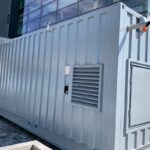The U.S. Department of Energy’s National Renewable Energy Laboratory (NREL) has released a new report that highlights the significant potential for renewable energy development on federal lands. By 2035, the country could deploy between 51GW and 84GW of renewable energy projects on these lands, representing a major step toward meeting net-zero emissions targets.
A Path to 10% of Clean Energy Requirements
This renewable energy potential could supply 10% of the clean energy needed for the U.S. to achieve its net-zero emissions goal. The projections come from a high-resolution geospatial model developed by NREL, which calculated the maximum available resources based on factors like federal land area, land suitability, and resource availability.
Input from Key Federal Agencies
To ensure the accuracy of its findings, NREL consulted with five key federal agencies: the Bureau of Land Management, the U.S. Fish and Wildlife Service, the U.S. Forest Service, the U.S. Department of Defense (DoD), and the Department of Energy (DOE). Their expertise was critical in refining the model and ensuring realistic assumptions regarding land use and environmental considerations.
Technical Potential of Federal Lands
Federal lands across the U.S. present a vast renewable energy potential. NREL’s report estimates a technical capacity of 7.7 terawatts (TW) from these lands, including:
- 5,750GW of utility-scale solar
- 875GW of wind power
- 130GW of hydrothermal
- 975GW of enhanced geothermal
However, current deployments on federal lands are limited, with only 4% of the U.S. utility-scale renewable capacity located on these lands, compared to 12% of oil drilling sites.
Land Availability and Environmental Constraints
Even though the theoretical potential for renewable energy on federal lands is enormous, strict siting constraints reduce these figures. After factoring in these constraints, the available capacity drops to:
- 1,750GW for solar PV
- 70GW for wind power
Despite these reductions, only a small fraction of the land would need to be developed to reach the 51-84GW range. In total, less than 2 million acres—under 0.5% of all federal lands—would be required for these projects. Of that, only 815,000 acres (0.2% of federal lands) would face permanent disturbance.
Executive Order on Land Use for Clean Energy and AI Data Centers
In a related development, President Joe Biden recently signed an executive order to facilitate the leasing of federal land for gigawatt-scale AI data center campuses and clean energy projects. The order also mandates improvements to the transmission infrastructure around federal land, addressing some of the logistical challenges in deploying renewable energy at scale.
Data Centers: A Key Consumer of Renewable Energy
Data centers are among the largest consumers of renewable energy in the U.S. However, the sector has expressed concerns that the current pace of renewable energy deployment may not keep up with its growing demand for power. The increasing reliance on renewable energy has led data centers to seek alternative energy arrangements, such as behind-the-meter agreements with natural gas and nuclear power providers, to ensure reliability.
Challenges in Scaling Renewable Energy
Despite these concerns, data centers continue to make strides in renewable energy procurement. Major companies like Meta and Google have recently signed long-term renewable Power Purchase Agreements (PPAs) to secure clean energy for their operations. However, there are challenges related to the development timeline for renewables and the capacity of transmission infrastructure to support the growing demand.
FAQ Section
Q1: What renewable energy resources are available on federal lands?
Federal lands in the U.S. have vast potential for solar, wind, geothermal, and hydrothermal energy. Estimates suggest up to 7.7 terawatts of technical capacity could be harnessed from these lands.
Q2: How much land would need to be developed to meet renewable energy goals?
To deploy 51GW to 84GW of renewable energy, less than 2 million acres—less than 0.5% of federal lands—would need to be developed, with a small portion facing permanent disturbance.
Q3: How does the U.S. government support renewable energy on federal lands?
The Biden administration has issued an executive order facilitating the leasing of federal land for clean energy projects, including data centers, and improving the transmission infrastructure to support these initiatives.
Q4: What challenges do data centers face in accessing renewable energy?
Data centers have expressed concerns over the speed of renewable energy deployment and the adequacy of transmission infrastructure, which sometimes leads them to seek backup power sources like natural gas or nuclear energy.
Q5: How does renewable energy deployment on federal lands help the U.S. meet net-zero emissions?
Renewable energy projects on federal lands could contribute significantly to meeting the U.S.’s net-zero emissions goal by providing 10% of the clean energy needed.



















